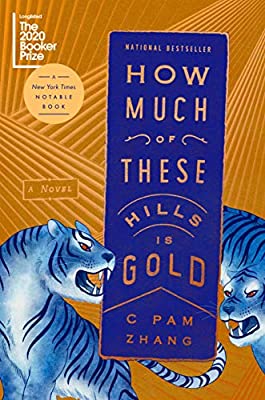Book: How Much of These Hills is Gold
Author: By C. Pam Zhang,
Publisher: Virago
Price: Rs 699
How Much of These Hills is Gold begins by being a historical novel, which brings together the American gold rush and the lives of Chinese immigrants. Lucy and Sam, American-born children of the immigrant couple, Ma and Ba, are orphaned very early in the book. As children and as adults, they remain in conflict over their differences in personalities. This, along with their need to claim an identity for themselves in a country that denies and suppresses their existence, makes up the crux of the story.
The structure of the four-part novel is somewhat asymmetrical. It started as short story, which is still available at longreads.com, that has become the opening section of the novel. This first section sees Lucy and Sam ramble across California with the decomposing corpse of their father (giving the reader a Tarantino-esque feeling), searching for a suitable place for burial and a secret place with tigers and wild buffaloes. In the second part, there is a flashback where the reader learns of the mother’s death after a stillbirth, and the loss of the money they had saved to go back to China, which resulted in the father becoming an alcoholic. The third section, a single long chapter, with the father’s ghost appearing to provide his backstory, makes the novel a little unbalanced as it departs from the previous sections in both structure and style. The last part returns to the structure of the first two, and the timeline of the first, set five years after the events of the first section. Readers, who were being made to follow Lucy seeking out and settling into stability and a sense of community, experience a sudden rupture with Sam turning up after a gap of five years.
Although the story has the American Wild West as its backdrop, the mention of tigers and buffaloes, Chinese folklore, the Chinese zodiac-based 12-hour system to tell the time and the leitmotif of the tiger deliberately induce a mythical aura. Sam’s return coincides with a rumour of a tiger appearing outside the town, as the siblings’ historical legacy threatens to engulf their present. In a guest blog post for virago.co.uk, C. Pam Zhang has said how John Steinbeck and the other authors of the American West shaped her own vision of it, despite the ‘overwhelming whiteness’, using adjectives like ‘paradoxical’, ‘conflicted’, and ‘stolen’. Thus, her own semi-mythical re-vision serves to explore both the recounting of history and the search for the immigrant’s identity.

How Much of These Hills is Gold Author, by C. Pam Zhang, Virago, Rs 699 Amazon
The prose is rich, too rich sometimes. Expressions like “his temper, which stuck to his side like a faithful old cur”, or “speech is a coin hoarded for these past three months”, sound as if they came out of a creative writing course — or one of the better written fanfictions. The same goes for fantastic phrasing like “the land over the sea” (it is not called China in the book). This is a little strange, given that the novel refers to historical events: for example, the 12,000 Chinese workers who worked on the first transcontinental railroad were ultimately left out of the official photograph when the project was completed. Scattered and untranslated Mandarin phrases do lend verisimilitude and serve to highlight the Otherness of the immigrants in an alien country, but also cause small hitches in an otherwise impressive read. Can everything be understood from the context? Readership is not homogeneous. As a story of Chinese immigrants during the gold rush, written by a Chinese-American author, this is probably meant to be a ‘giving a voice’ novel. Depiction of the insecurities and the emotional aspects of the immigrant experience makes the book very contemporary and relevant. However, it would appear that almost all of the early Chinese immigrants were Cantonese and would not have spoken or understood Mandarin. The name of the novel too, apparently, refers to the Cantonese name for America in those days. All this may not bother the majority of readers, but those who are aware of history as well those of Cantonese descent are bound to take umbrage at this reconstruction where elision plays a major role.
Zhang’s excellent characterization suffers a little from the way she handles Samantha or Sam, who is physiologically a girl but identifies as a boy (what we would call an F2M character). To some readers, Sam’s dropping off the radar for a large part of the story and then popping up in the last part to come of age and be tangled with the mythical tiger motif may appear like an obvious queerbaiting against the already problematic Wild West narrative of cis-hetero-white males. Ultimately, the text raises the question of where minorities in any capacity are allowed to belong, with ‘allowed’ being the wrong word.











